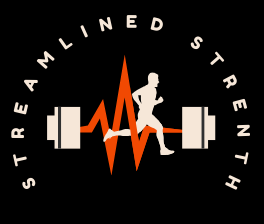Mastering the Incline Dumbbell Hex Press
Share

The hex press—or more specifically the incline dumbbell hex press—is a wildly undervalued chest exercise.
When it’s time to hit chest, most people go the conventional bench press, cable fly, dip, or push-up route.
Now, while none of those are bad options, the incline dumbbell hex press provides a handful of benefits that those exercises lack.
In this post I’m going to unpack why the incline dumbbell hex press is such an elite chest exercise, how to complete it, tips, mistakes, and some frequently asked questions.
Why the Incline Dumbbell Hex Press?
I look at the incline dumbbell hex press as a mix of the plate pinch press and the incline dumbbell press, combining the best aspects of both.
The hex press, like the plate pinch press, maintains consistent isometric stress on the chest by squeezing the dumbbells tightly throughout the movement.
Simultaneously, it simulates the incline dumbbell press's range of motion and upper chest concentration, allowing for a stronger stretch and activation in the pecs, particularly the upper chest.
I've stated before that if I had to choose one chest exercise for the rest of my life, that would be the incline dumbbell exercise and I stand by that.
However, the incorporated squeezing and close-to-the-body aspect of the incline db hex press is a real game changer.
Below are my top 6 advantages of why I love the incline dumbbell hex press.
- Constant chest tension.
Pressing the dumbbells together generates consistent isometric tension, which maximizes chest activation during the movement.
- Upper Chest Focus
The upper chest is the most important section of your chest to focus on. Your upper chest is the key to growing definition.
- Shoulder-friendly.
The close and controlled pressing motion reduces strain on the shoulder joint. Compared to alternative chest exercises that require your arms outside your torso, the hex press is low risk.
- Supports Progressive Overload
The setup and weight path allow you to naturally increase the weight, making it a great exercise for building strength and muscle mass.
- Adaptable to Various Goals
Whether your goal is building size, strength, or endurance you can adjust the weight and reps to meet your goals.
- Versatility
The incline dumbbell hex press can be a primary or a secondary lift.
Incline Dumbbell Hex Press - How To
Set the bench to a roughly 45-degree angle.
Choose two dumbbells (start moderate if you're inexperienced with the exercise).
Lay back on the bench and hold the dumbbells up with your palms facing each other.
Have the dumbbells arranged in a hexagonal pattern and pressed together throughout the exercise.

Start the movement by lowering the dumbbells close to your chest, slightly below your collarbone.
At the bottom of the exercise squeeze your chest and press the dumbbells back upward, keeping a steady pressure between them.
Make sure your arms are fully extended at the top, but avoid locking your elbows.

Pause briefly at the top and squeeze your chest muscles.
Repeat the required number of reps.
Exhale on the way up, inhale on the way down.
Rep Range
Building Size: 3-4 sets of 8-15 reps with moderate weight—focusing on isolation.
Building Strength: 4-5 sets of 4-6 reps with heavier weights—focusing on explosiveness.
Building Endurance: 2-3 sets of 15-20 reps with lighter weight—focusing on the burn and quantity.
Mistakes
Letting the dumbbells drift apart - removes the intention behind the lift and doesn’t activate the proper muscles.
On the contrary, letting your elbows flare out too much - this places strain on the shoulders and takes pressure away from the chest.
Overarching your back - A classic compensation technique. Changing the angle of the lift by arching and sliding down the bench can make it easier to lift the weight. If you’re relying on arching your back every rep, lower the weight and focus on form.
Muscles worked
Upper pectoral - the primary muscle used in this lift.
Anterior deltoids—or the front part of your shoulder—assist by stabilizing the weight during the movement.
Triceps - are engaged in the pressing portion of the exercise.
FAQ
What makes the incline hex press better than the standard hex press?
More isolation to the upper chest. Same idea as the standard dumbbell press and incline dumbbell press, it comes down to preference and fitness goals. That said, in the bodybuilding world, upper chest gains are typically more sought after.

How many reps should I do for the incline DB hex press?
To increase size, do 3-4 sets of 8-15 reps with moderate weight for isolation; for strength, do 4-5 sets of 4-6 reps with higher weights and concentrate on explosiveness. For endurance, perform 2-3 sets of 15-20 repetitions with lesser weight, focusing on burn and volume.
What muscles does the incline dumbbell hex press work?
Primarily the upper chest, but the anterior deltoids (front shoulder), and triceps also play a role throughout the movement.
Thanks for reading! For an awesome shoulder exercise, check out the seated Arnold Press.
For tips on how to work out more efficiently, check out 10 Tips for Streamlined Strength and Dorian Yates 4-Day Split.
